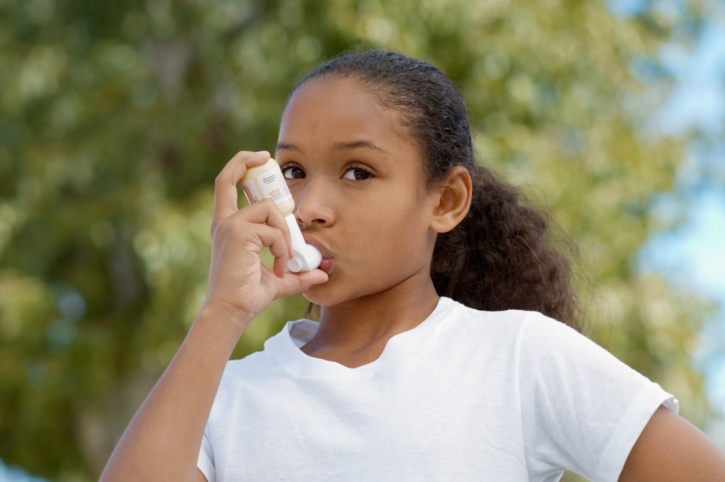A new study authored by a research team led by Dr. Corrine Keet of John’s Hopkins Children’s Center has found no link between outdoor air pollution and childhood asthma.
Dr. Keet’s team followed 23,000 U.S. children and found no statistically significant difference in asthma rates between those who live in inner-city neighborhoods, which have higher pollution levels, and those who live in suburbs and rural areas.
The study comes at a crucial time as the Environmental Protection Agency (EPA) considers tightening limits for ground-level ozone, commonly known as smog.
“Clearly, I think it undermines one of the primary excuses used by the EPA to regulate carbon dioxide emissions and some types of air pollutants as well,” Paul C. “Chip” Knappenberger, assistant director of the Center for the Study of Science at the Cato Institute, said of the study. Since the 1970s, the EPA has used childhood asthma as the driving force for nearly every “clean air” rule the agency has implemented.
The study points to indoor air pollution, from secondhand smoke, mold, rodents, and the like, as a significant factor in childhood asthma cases. The EPA does not have authority over indoor air pollution.
Following the Science?
The EPA is taking comments over a proposal to lower the current standard of 75 parts per billion (the concentration of ozone pollution in the air that is breathed) to a standard in the range of 60-70 parts per billion.
EPA Administrator Gina McCarthy claimed to be “following science” when she proposed stricter national ozone pollution standards in November 2014. She said it’s the EPA’s job to depend on the latest science when updating air quality standards so those most at risk are protected—”our children, our elderly, and people already suffering from lung diseases like asthma,” she said at the time.
Multiple studies, however, have found no link between ozone levels and asthma rates, onset, or attacks. For example, a 2009 study in the American Journal of Respiratory and Critical Care Medicine found no statistical difference in lung function in people exposed to ozone at 60 parts per billion compared to levels as high as 80 parts per billion.
Dr. Keet’s findings point to poverty, not air pollution, as a leading factor in childhood asthma. Poverty could be exacerbated by the EPA’s new proposal.
Rule Could Kill 226,000
Leaving out California, which has been given additional time to meet clean air standards, the EPA estimated the new ozone rule would cost the economy between $15 and $39 billion by 2025. A study by the American Manufacturers Association estimates the ozone rule could reduce U.S. GDP by $140 billion per year and $1.7 trillion between 2017 and 2040. The U.S. Office of Management and Budget has estimated every $7.5 million to $12 million in regulatory costs imposed on the economy results in a life lost. As a result, the costs imposed by the new ozone limits could result in 1,250 premature deaths in 2025 alone, and a total of up to 226,667 premature deaths by 2040.
“Our results highlight the changing face of pediatric asthma and suggest that living in an urban area is, by itself, not a risk factor for asthma,” lead author Keet, a pediatric allergy and asthma specialist at Johns Hopkins, said in the study. “Instead, we see that poverty and being African American or Puerto Rican are the most potent predictors of asthma risk.”
“Perhaps being cynical, I doubt that this finding will influence the EPA to reconsider its ozone rules,” Knappenberger said.
Driessen: EPA Will Ignore Results
Paul Driessen, senior policy advisor to the Committee for a Constructive Tomorrow, agrees with Knappenberger.
“Sadly, I think the EPA will ignore this study, as it does any research that undermines the need for expanded powers and budgets. Study after study shows the EPA’s proposed ozone standards between 60 and 70 parts per billion will do nothing to protect public health in general or prevent childhood asthma in particular.”
“To suppose this additional 5-10 ppb reduction will improve human health or environmental quality is absurd. The proposed standards are below ozone levels naturally occurring in Teton County, Wyoming, the home of Jackson Hole and the Grand Tetons and next door to Yellowstone National Park,” Driessen said.
Alyssa Carducci ([email protected]) writes from Tampa, Florida.
INTERNET INFO
Corinne A. Keet, Meredith C. McCormack, Craig E. Pollack, Roger D. Peng, Emily McGowan, Elizabeth C. Matsui, “Neighborhood poverty, urban residence, race/ethnicity, and asthma: Rethinking the inner-city asthma epidemic,” Journal of Allergy and Clinical Immunology, (January 20, 2015). https://heartland.org/policy-documents/neighborhood-poverty-urban-residence-raceethnicity-and-asthma-rethinking-inner-city
NERA Economic Consulting, “Assessing Economic Impacts of a Stricter National Ambient Air Quality Standard for Ozone,” (July 31, 2014). https://heartland.org/policy-documents/assessing-economic-impacts-stricter-national-ambient-air-quality-standard-ozone




